A few of the things I see most frequently in my Instagram DMs are questions and comments concerning my transferware collection -specifically the pieces you all saw in our kitchen reveal post. So with all this time spent at home, […]
A few of the things I see most frequently in my Instagram DMs are questions and comments concerning my transferware collection -specifically the pieces you all saw in our kitchen reveal post. So with all this time spent at home, I decided to finally sit down and share my tips on what to look for in antique transferware & a look at our colonial collection.
When I first started collecting transferware – my obsession came out of nowhere. Ironically enough my love for colonial transferware really came from my time spent in Texas. If you’re new around here, Matt and I lived just north of Dallas in a country town called McKinney, from 2016 until June of 2018. We truly loved our time in Texas – especially our evening strollings through the historic downtown to see what new treasures the antique shops had gotten in. A little shop called Chase Hall, stood above the rest with antique items sourced bi-yearly from France and England. In fact, every quarter they’d get these huge frat boxes from Europe filled with all these 19th-century pieces – from antique pastel portraits to authentic bread bowls, Chase Hall had something for everyone. Over my two year stint in Texas, my collection of transferware grew from zero to over eight pieces plus or minus three sets of Staffordshire dogs – which Matt is trying to learn to love. Anyway, now that you know how I got into this collection – let’s kick things off with what to look for in antique transferware!
What To Look For In Antique Transferware
Personally I look for three things when antiquing for transferware – a paper seam on the rim, a stamp of production/a pattern registration number, and the coloring of the piece. Below I’ve broken down why each of the above is important to look for whether shopping online or in-person.
A Paper Seam On The Rim:
Authentic antique transferware pieces will have one seam lines on the rim from the transfer paper. The lines can appear as a flaw, or overlap, in the pattern, a faint crack, or even just a dainty white strip – while often easy to spot sometimes these seams can be more difficult to find in more repetitive rim patterns as shown in one of my plates above. Overall the sight of this seam helps us to authenticate the time period of creation as transferware today can appear almost seamless in perfection.
A Stamp of Production or Registration Number:
The next step in authenticating a transferware piece is flipping the piece over and looking for a stamp of production or registration number. Most commonly you’ll find pieces made in France during the early 19th century to have a stamp of identification placed right into the back of the ceramic plate wear – scroll down to see an example of this on one of my plates. However in the late 19th century producers started to avoided stamping the plates and instead printed brand markings with the factory name done in a manner that matches the artwork on the font. If you see a stamp or a brand name don’t hesitate to use google to research the brand and the dates they were in production. Now occasionally you’ll find pieces with just numbers stamped into the back – these unsigned pieces often represent a piece of English transferware form the late 19th century as plate designs began to be trademarked by numbers and manufacturers omitted branding altogether. Finally, if you come across a piece of transferware with a ‘Made In England’ stamp – it’s most likely a newer piece from the 20th century.
Coloring Of The Piece:
When I began my transferware collection, I decided to only purchase black plates to give the entirety of my collection a uniform look – even though not all the plates were part of the same series or brand. Beyond aesthetics the coloring of the piece could make it more or less desirable as transferware comes in a large array of colors – some more valuable than others and most commonly will be seen in blue!
My Colonial Transferware Collection
Personally, my colonial transferware collection is a combination of three different transferware series all by different European manufacturers from the 19th century. Overall one of the reasons I love transferware is that each series comes together to tell a unique and colorful story. Sometimes the stories are humorous and clownlike – as seen in these plates, sometimes the stories document the lives of the citizens at the time – as the plates show in my collection above, and sometimes you’ll see stories of love and war – but that’s the fun of transferware you’ll never know what you’ll find.
Now, let’s kick things off with the smallest plates in my collection – featured in the above images. These plates are stamped with the wording CHOISY Le Roi; which tells us that they were likely produced in France sometime between 1820-1836. Personally, I just adored the detailing in, not only the center image but the plate’s rim itself. These plates depict the life of french villagers during the early 19th century, which is so unique and fun to interpret. From bowling in the streets to the nightly vigils – these pieces of transferware provide us with a peek into everyday life in the 19th-century French countryside. Overall it’s unclear how many plates in total, are in this series by CHOISY Le Roi but so far I have plates numbered – 2, 4, and 10!
Next up is by far my favorite plates in our transferware collection which are the above, country courting themed pieces. With an elaborate floral border and drawings depicting stories of countrymen like bakers, grain farmers, and chicken raisers – courting women of the village. Stamped with a P&H Choisy branding on the back, as you can see in the above image, we can assume these pieces were likely produced in France sometime between 1824-1836 as well. I was actually able to find very similar full sets online which you can shop here & here.
Finally the last piece of transferware I’ve recently added to my collection came from an antique shop in Meredith, New Hampshire. It’s actually my first piece of transferware from England the plate is called CLYDE SCENERY and was manufactured by Jackson’s Warranted in 1835. You can shop antique Jackson’s Warranted pieces here & here. Overall I hope this post shed some light on what to look for when antiquing and I’ve linked some transferware pieces that I’ve had my eye on below!
Shop This Post:
Newsletter
Subscribe to see our favorite pieces of New England, in your inbox weekly.

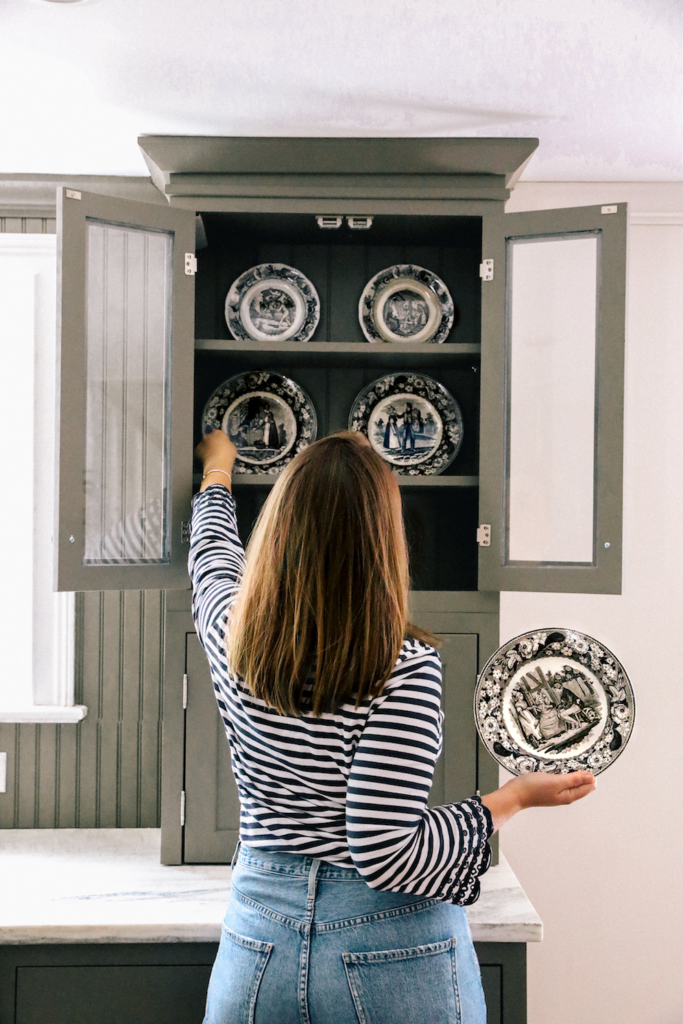
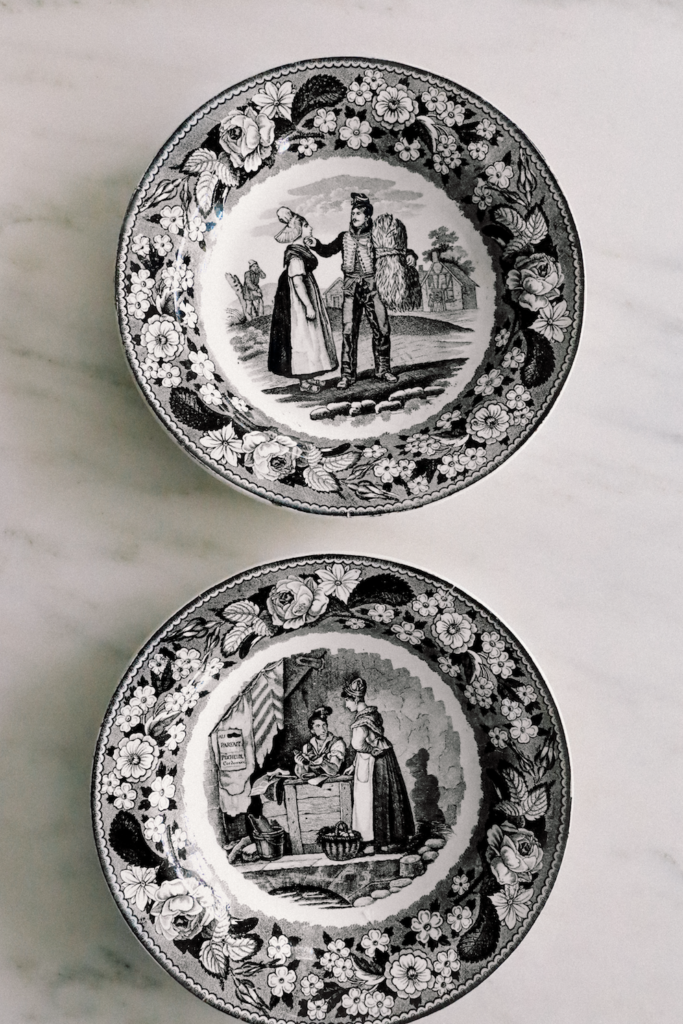
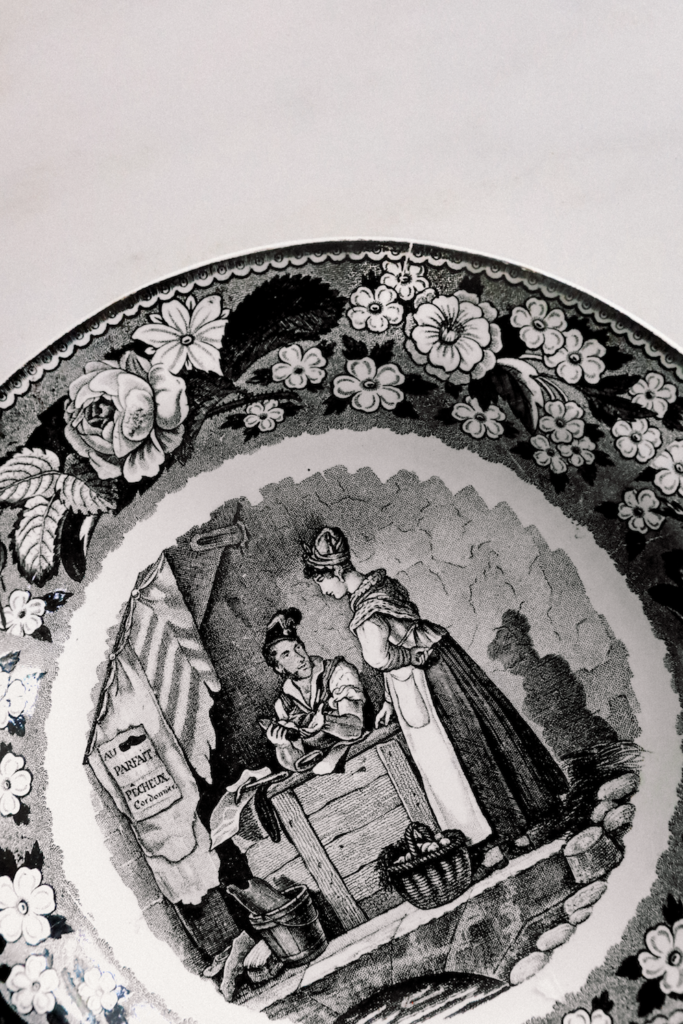
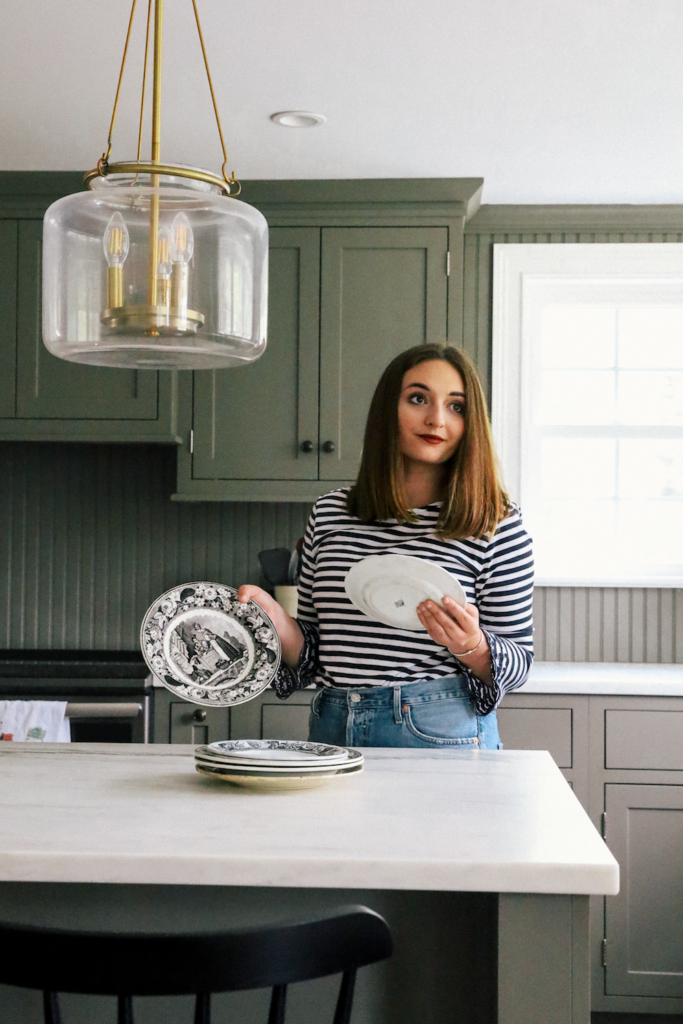
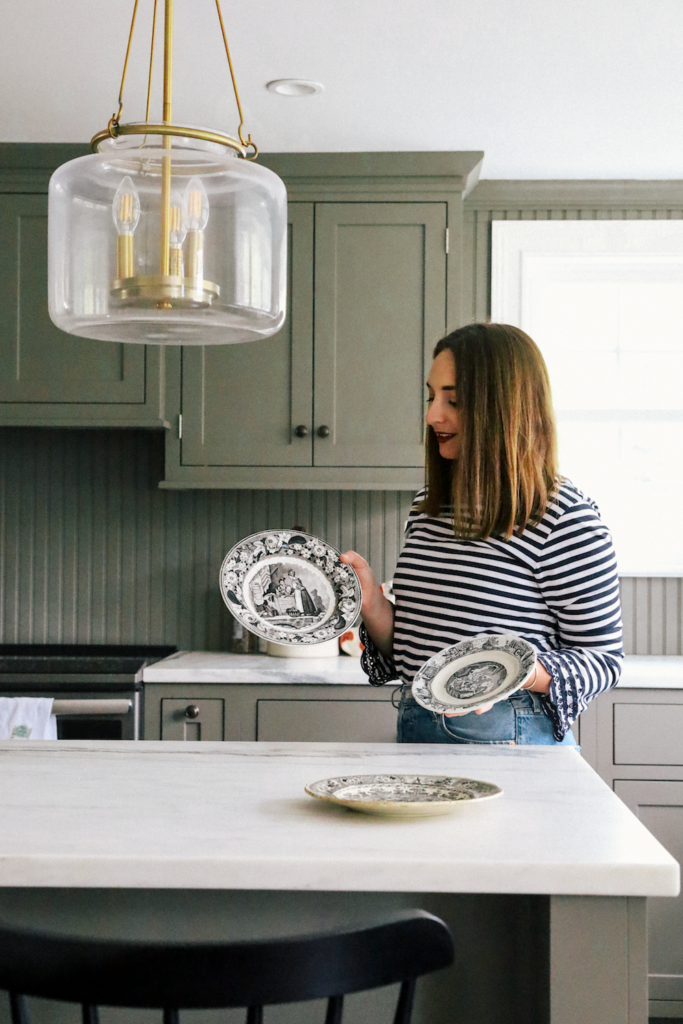
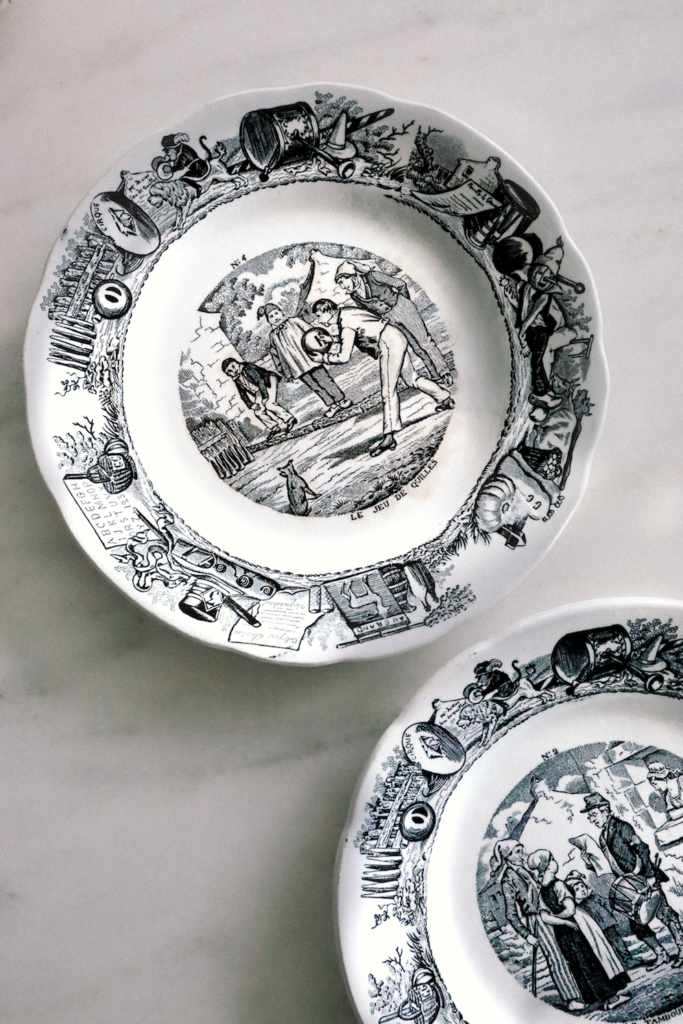
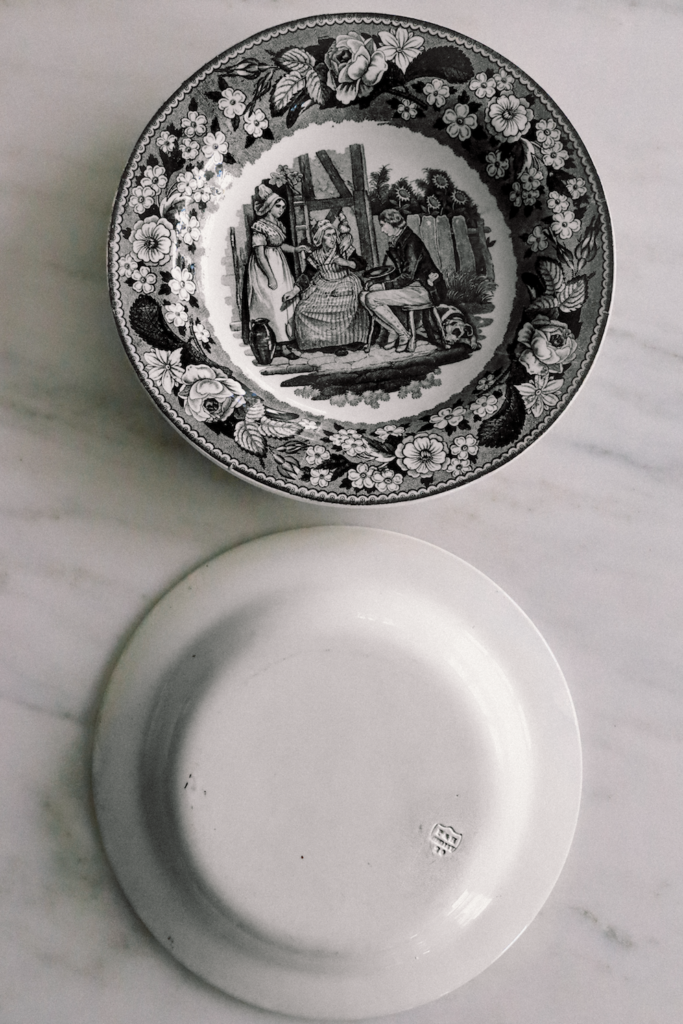
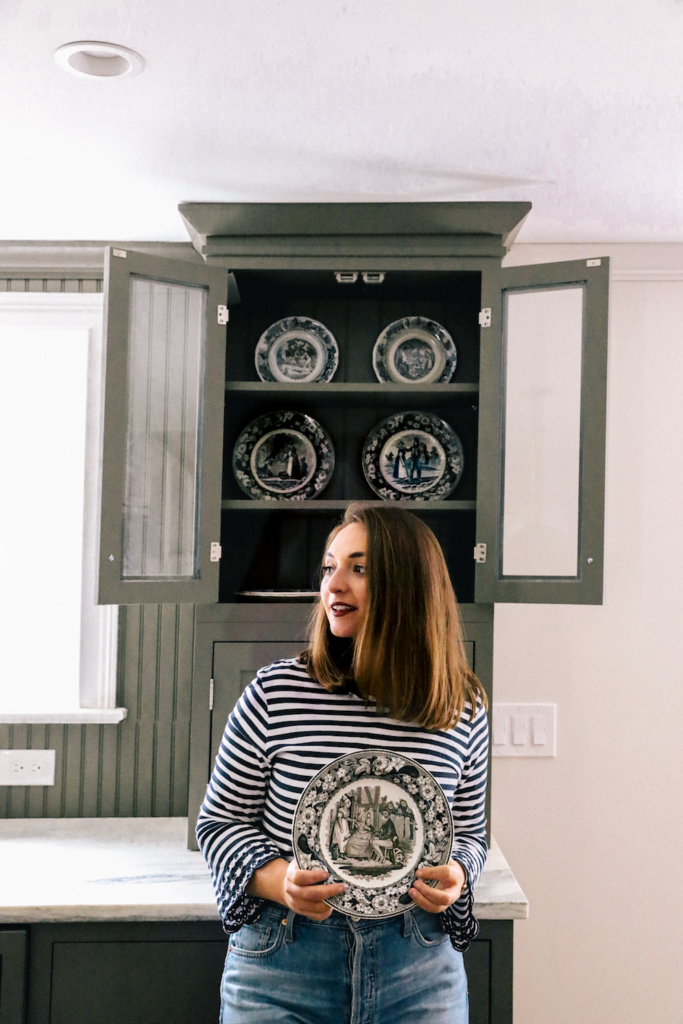
Leave a Comment